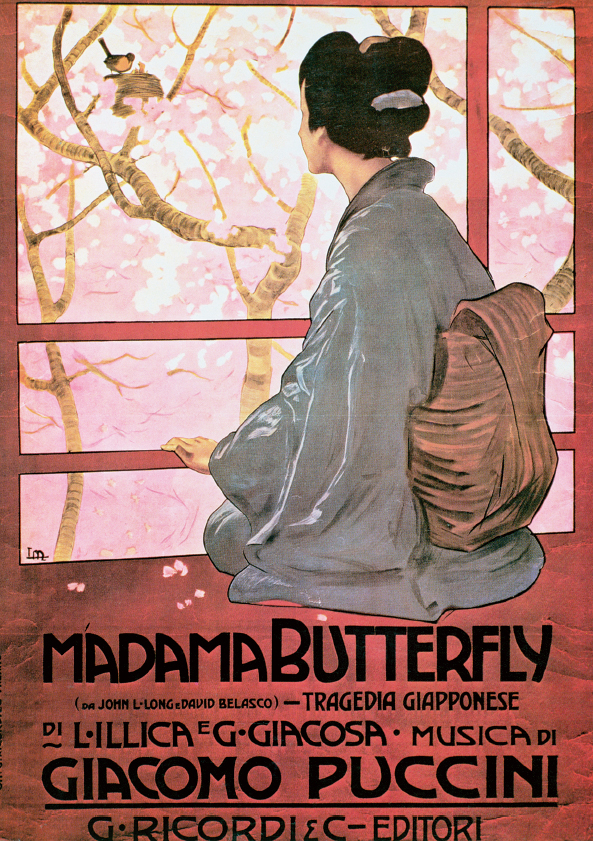Giacomo Puccini, Madame Butterfly (1904)

Puccini’s Madame Butterfly, derived from a play by the American author David Belasco, has a disturbingly true-
During Act II, in response to her maid’s doubts, Cho-
After this melody, the aria takes on a freer formal cast. Cho-
But when she comes in her fantasy to the moment of remeeting Pinkerton (“Per non morire . . .”), she sings her heart out to a reprise of the aria’s opening melody, now louder and with redoubled, brass orchestration. It is a stroke of almost unbearable pathos, for it dramatizes the helpless growth of her fantasy. Originally linked to the hope that Pinkerton’s ship would return, now the main melody expresses her joy at his reunion with her — which is sheer delusion. Puccini underscores the pathos when, at Cho-
LISTEN
Puccini, Madame Butterfly, Aria “Un bel dì” from Act II
| 0:00 |
Un bel dì, vedremo levarsi un fil di fumo sull’estremo confin del mare; e poi la nave appare. |
One beautiful day, we’ll see a tiny thread of smoke rise up on the horizon, out at sea; then the ship appears. |
| 0:38 |
Poi la nave bianca entra nel porto; romba il suo saluto. Vedi? È venuto! Io non gli scendo incontro — io no; |
Now the white ship sails into port; cannons roar a welcome. See? He has come! I don’t run to meet him — not I; |
| 1:24 |
mi metto là sul ciglio del colle, e aspetto, e aspetto gran tempo, e non mi pesa la lunga attesa. |
I go to the brow of the hill and wait, and wait a long time, but the long wait doesn’t bother me. |
| 1:49 |
E uscito dalla folla cittadina un uomo, un picciol punto, s’avvia per la collina. |
Out of the crowd down in the city a man, a tiny speck, sets out up the hill. |
| 2:18 |
Chi sarà, chi sarà? E come sarà giunto, che dirà, che dirà? Chiamerà: “Butterfly” dalla lontana . . . Io senza dar risposta me ne starò nascosta un po’ per celia, e un po’ |
Who is it? Who is it? And as he comes, what will he say? what will he say? He’ll call out: “Butterfly” from afar . . . Without answering I’ll hide myself, partly to tease him, and partly |
| 2:56 |
per non morire al primo incontro! Ed egli alquanto in pena chiamerà, chiamerà: “Piccina mogliettina, Olezza di verbena” — i nomi che mi dava al suo venire. |
so as not to die when we first meet! And then he’ll be worried and call: “Little child- Verbena blossom!” — the names he gave me when he first came. |
| 3:40 |
Tutto questo averrà, te lo prometto! Tienti la tua paura; io con sicura fede l’aspetto! |
All this will happen, I promise you! Don’t be afraid; I await him knowing he’ll come! |